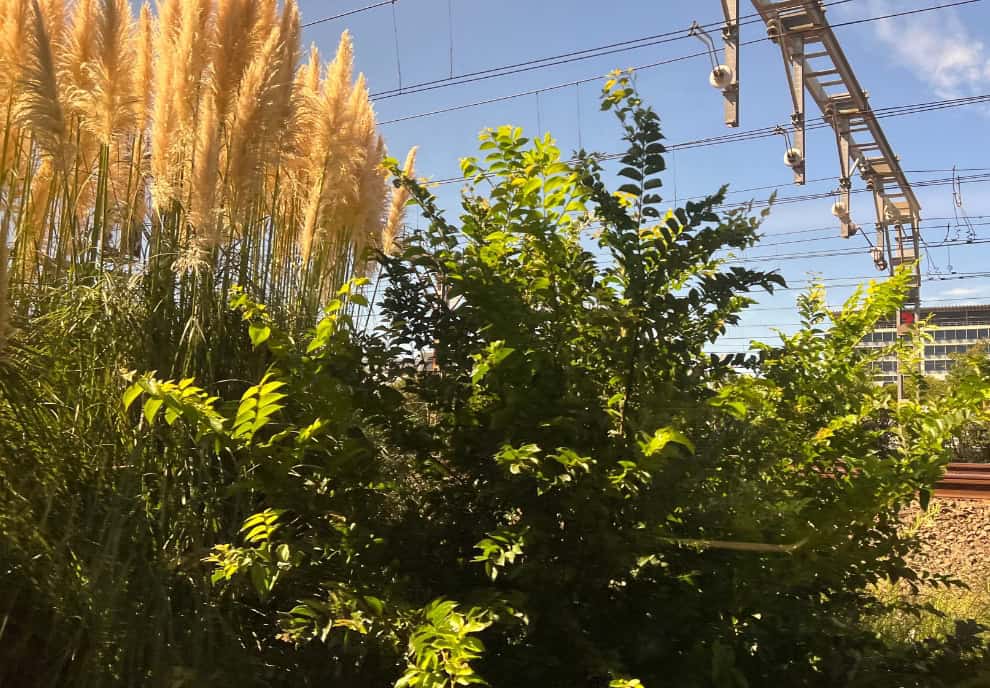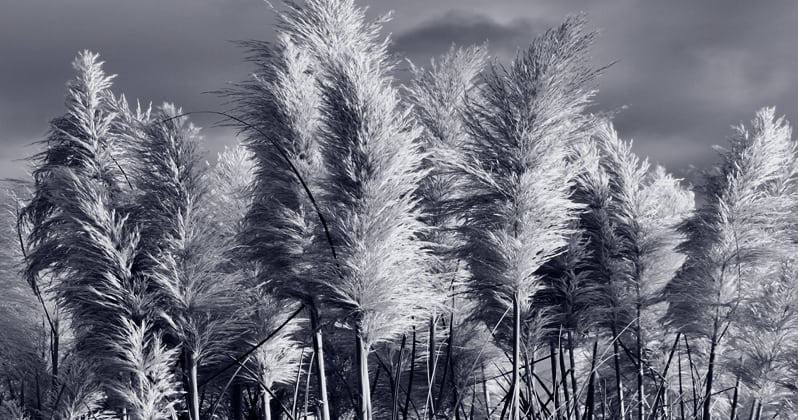It was a weed that Sydney almost eliminated.
In the 1970’s the NSW government banned pampas grass (Cortaderia species) and ran an effective education campaign that encouraged gardeners to remove the plant from their gardens.
These efforts were largely successful. I remember my parents digging out a 2-metre-high plant from their front garden. Plant nurseries stopped stocking the plant, gardens were no longer a source, and Sydney was rapidly becoming pampas grass-free.
Now this highly invasive plant is mounting a comeback – through neglect and regulatory failure rather than naïve plantings from home gardeners.
20 years ago, you could not see a pampas grass along a Sydney railway line or freeway verge. 10 years ago, you could see the odd one or two. Now you can see them regularly, every few kilometres.

Sites in Sydney and the Central Coast reported to Invasive Species Council consist of many hectares of land on road and powerline easements, mine sites and vacant land and building sites awaiting development, each with thousands of pampas grass growing as an impenetrable monoculture. In the Lithgow Council area, where biosecurity rules for pampas grass are weaker, pampas is moving into wetlands of the Blue Mountains World Heritage Area. Full flowering pampas has been a regular feature of land at the former Everleigh railyards near Redfern Station for more than 10 years, with one luxuriant flowering plant sandwiched between railway tracks in plain sight of the hundreds of thousands of commuters that pass it each day.
One particularly problematic area is along the Alexandra Canal and vacant blocks at the northern end of the original north-south runway at Sydney airport. These major infestations border container terminals and railway goods lines, allowing the windblown pampas seeds to hitch a ride across NSW and further afield.
When pampas grass infested sites are developed, there are no controls to prevent seed contaminated soil from being dumped elsewhere.
Following community complaints, the standard response is to engage a contractor to lop the feathery seed heads, leaving the parent plant to produce a fresh crop of seeds months later. More often, complaints are ignored and intact seed heads exacerbate the problem.
As well as the seed heads, the removal of the mature plant must be required, along with follow-up treatment to remove offspring from germinating seeds. Soil movement restrictions must be instituted to ensure the seed-bank is not spread. Penalties for non-compliance must incentivise action.
In NSW, biosecurity officers with local governments have compliance responsibilities for managing obligations to control invasive plants like pampas grass. Their performance on pampas grass is patchy, poor and inconsistent. Transport corridor, mine and vacant land managers are the main problem areas.
Pampas grass is a prominent weed that underscores a larger problem, with many other highly invasive weeds being allowed to spread. There is a systemic failure in weed management and compliance across NSW.
Thirty years ago, the campaign to eliminate pampas grass from Sydney and NSW was on the cusp of success. Given the huge investment to remove pampas grass so far, our authorities cannot let this goal slip from our reach.
Andrew Cox is the CEO of the Invasive Species Council.


